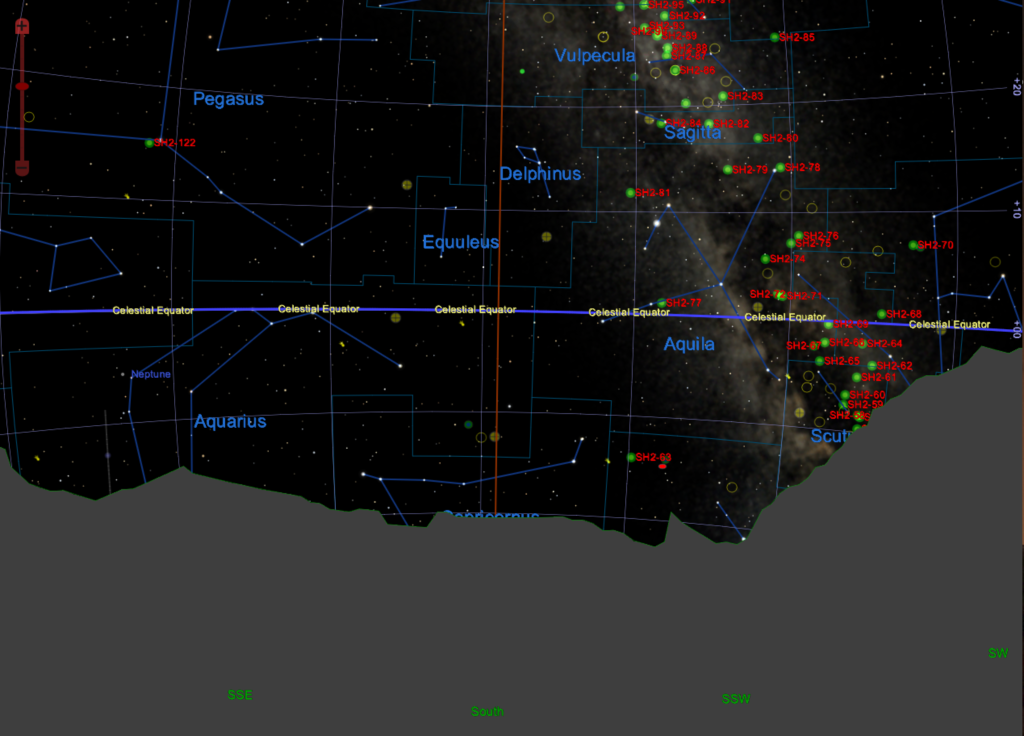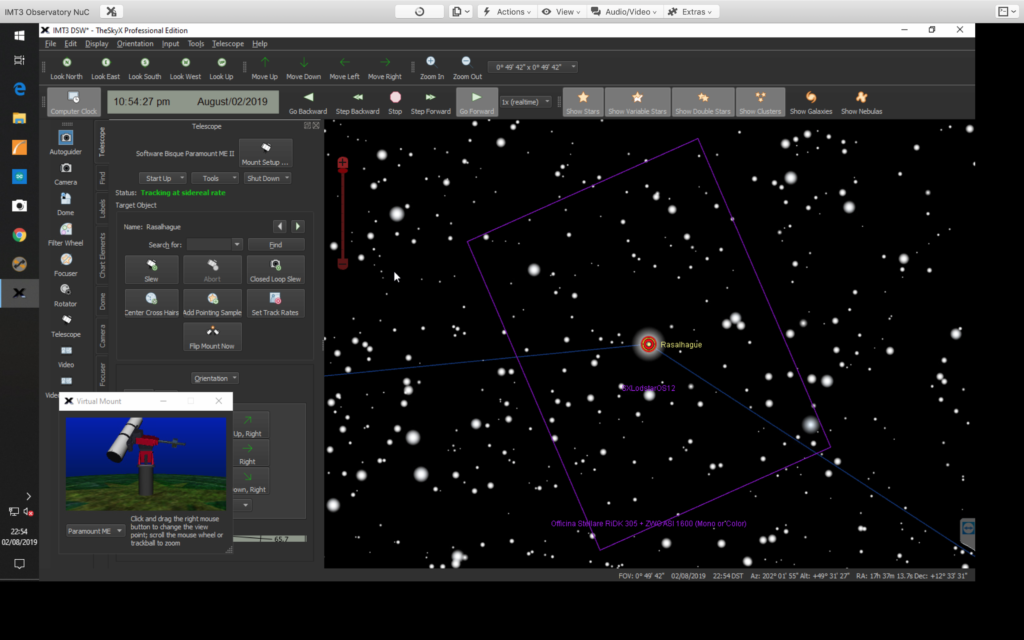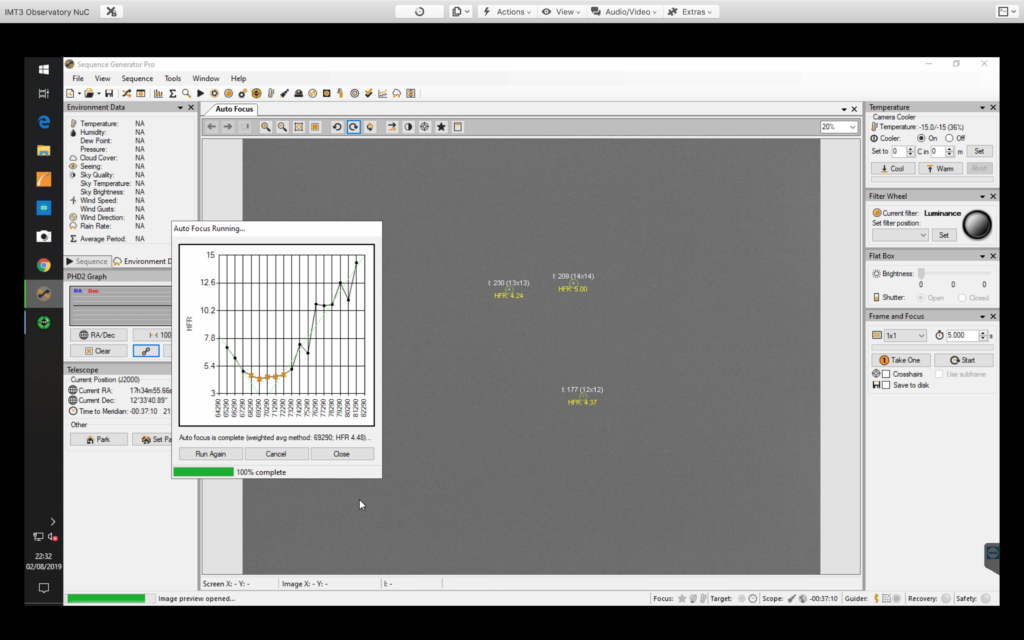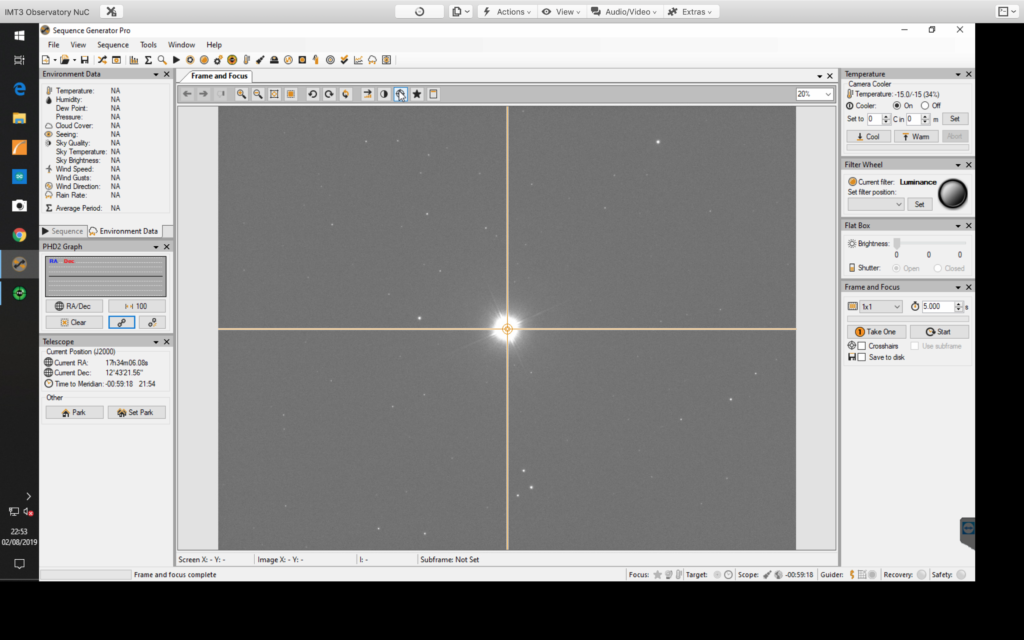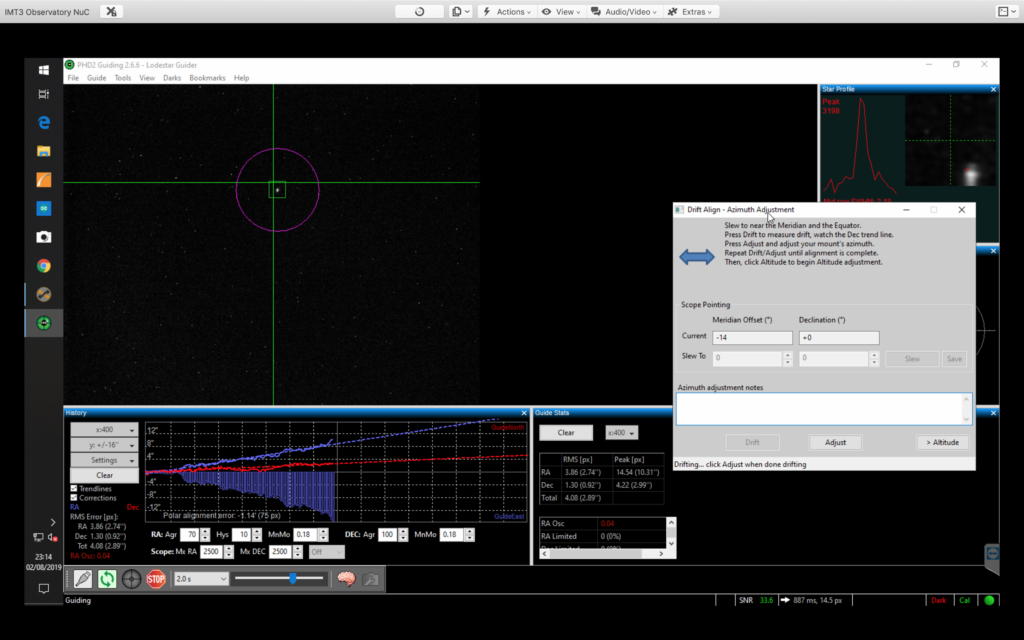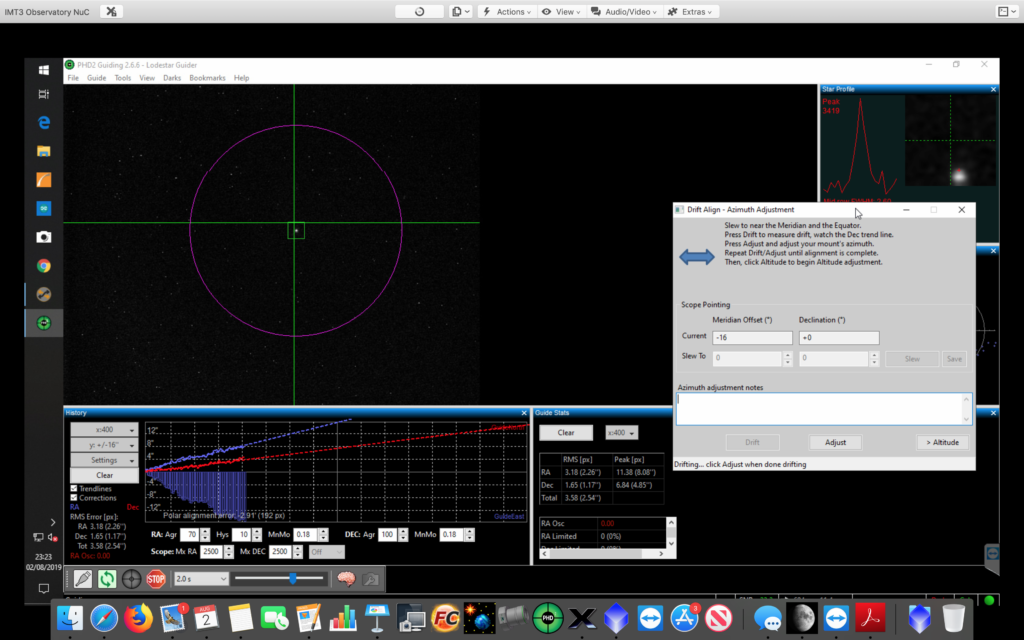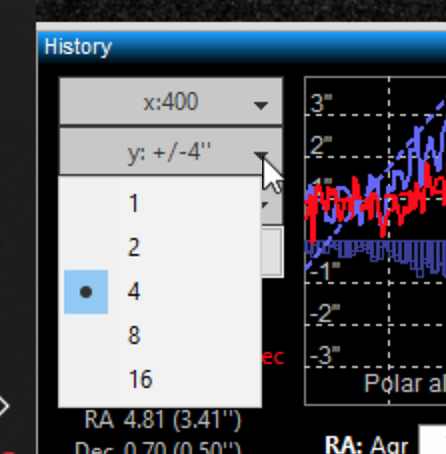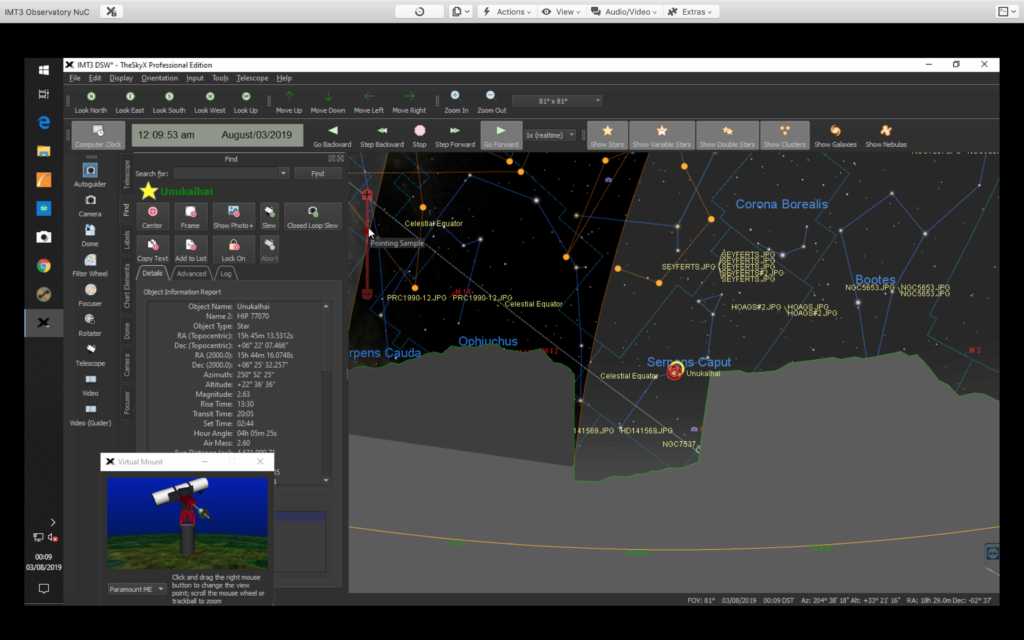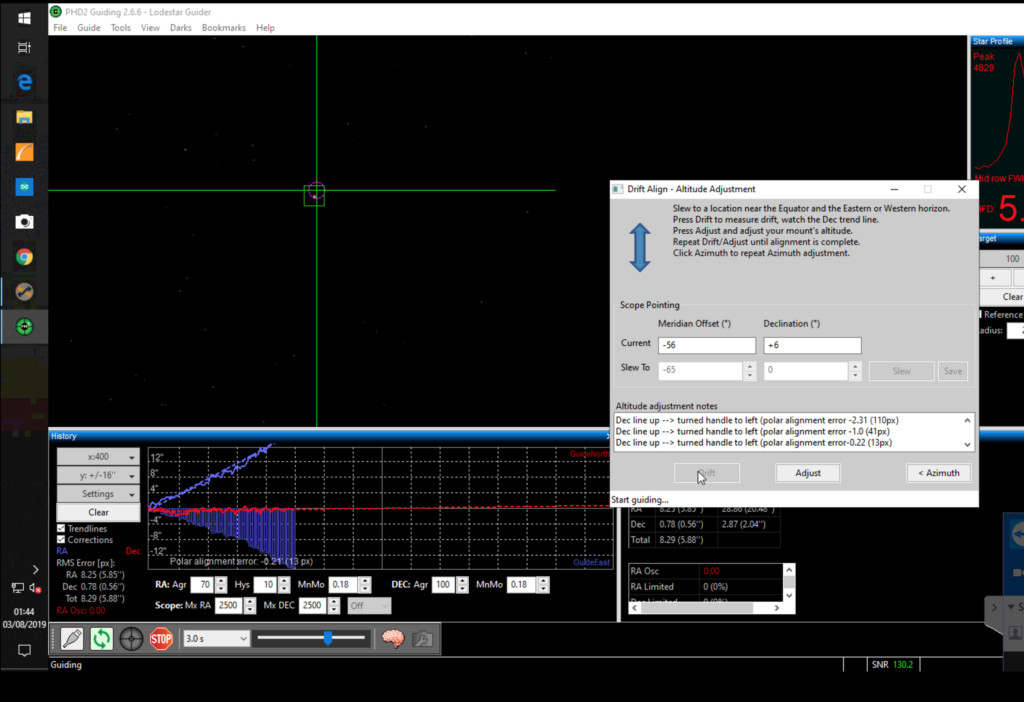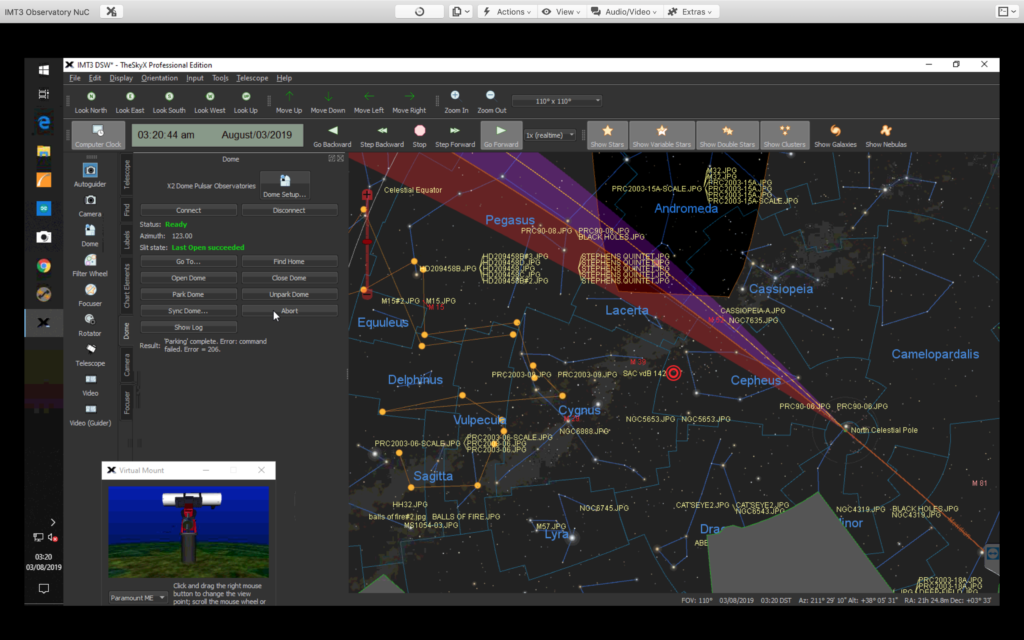Viewing time period – 19:21 – 02:57
An unexpected clear spell this evening, I was sitting out on the patio looking at the clouds clearing and so setup the dome to perform the Periodic Error Correction (PEC) analysis for the mount.
To perform this I needed to unplug the hand controller for the MEII, unplug the ST4 guider cable, turn off a bunch of settings within the autoguider software with The SKY X (TSX) and also turn off TPoint.
I then connected the ZWO ASI1600MM to TSX rather than SGPro. This was so that I could record the log needed for the PEC through the autoguider add on software which records in a format that the PEC software requires. The challenge again was that I could not get the ZWO camera to connect in TSX. I just kept getting error 200. Searching TSX forum I finally found the issue and downloaded the latest driver from ZWO but through the link from Software Bisque. To install I needed to log in as Admin.
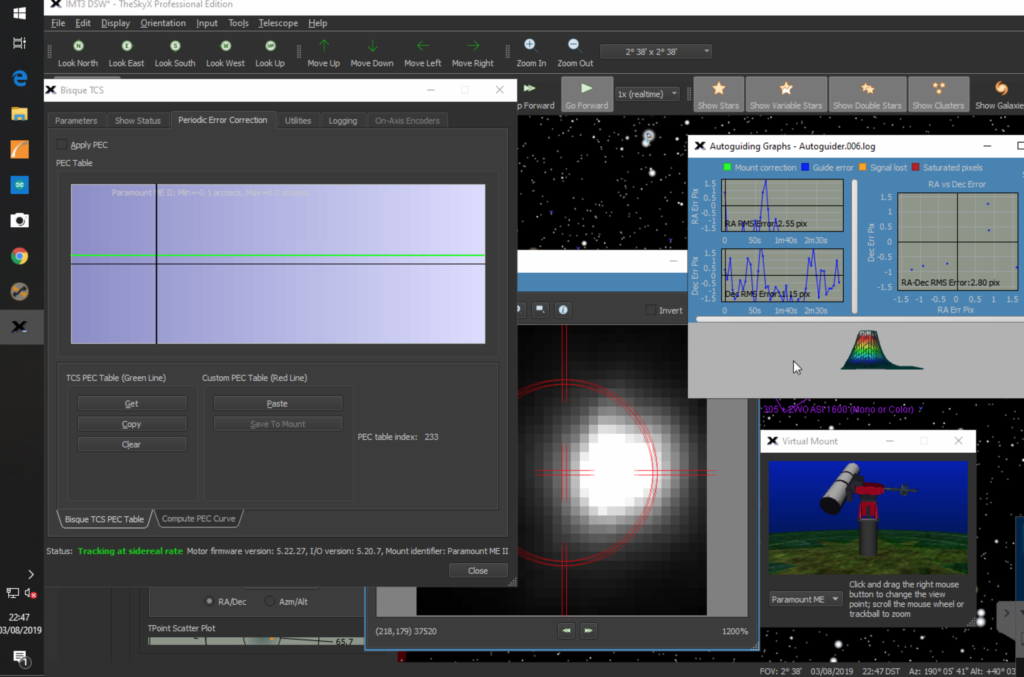
So I started to record the star movement without performing any guiding. Once done I imported the log file Autoguider.010.log into the PEC portion of TSX.
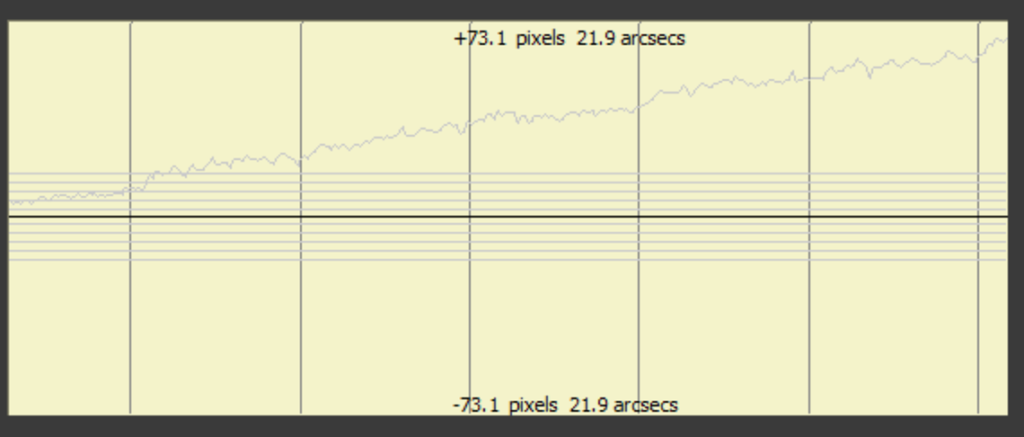
I then performed a fit so that you could see the sinusoidal waves before I then fitted the correction to it. A quick look using PHD2 Drift Alignment to see what the drift now was, was very promising with a sinusoidal wave over 10-15 minutes.
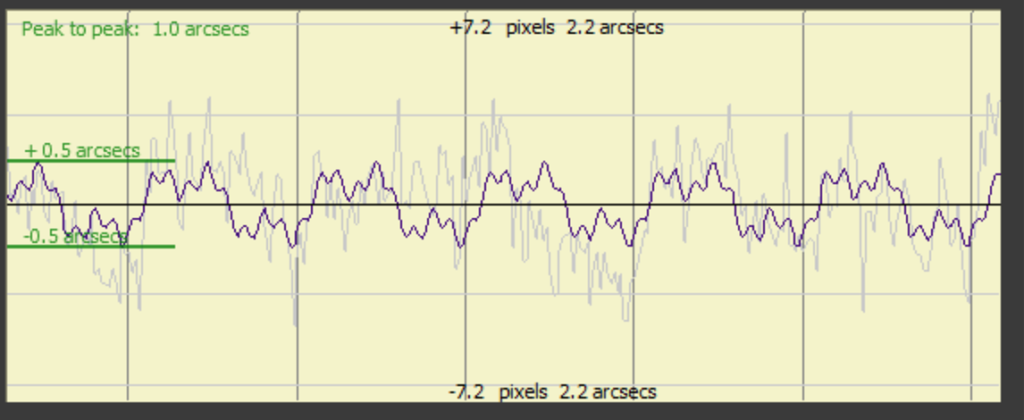
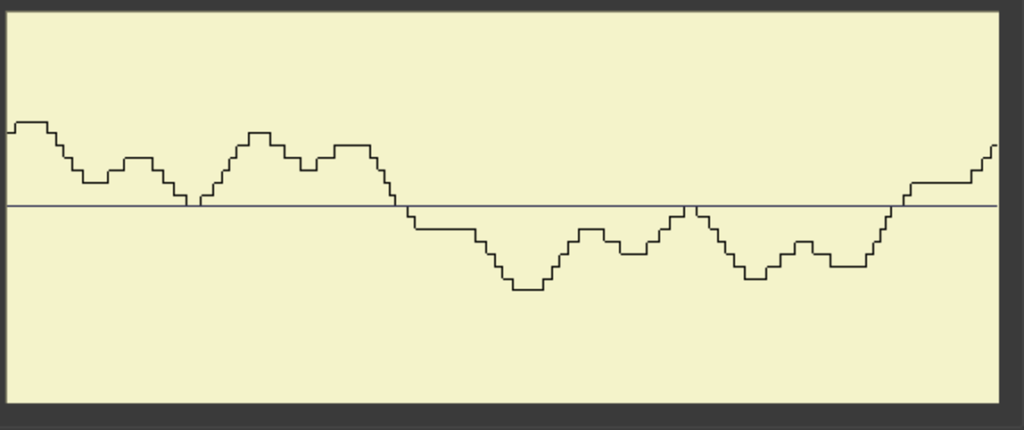

I then went off and tried to image unguided to see if it made a difference, it had, I recorded a 10min unguided image through the 12″ 2.5m focal length scope with no trailing of Altair.

I then attempted to slew and take an image of the Elephant Trunk in Ha again, however I was foiled by not only the cloud moving in but also not being able to get past the message Guider Settling. I need to talk through with GingerGeek to see why that is. Meanwhile bedtime for Mr Shave-Wall.


